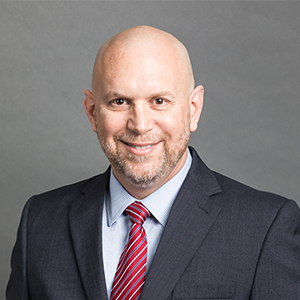
With many politicians and news agencies speaking about healthcare, I have yet to hear any of them discuss the crisis that is rural healthcare. Since 2010, 107 rural hospitals have closed in twenty-seven states.* This number does not include facilities that have merged with or sold to another facility, but only those that have ceased to provide any form of healthcare. Additionally, according to a report created by Navigant**, from information compiled from the Centers for Medicare and Medicaid Services (the other CMS), nearly 20% of all rural hospitals are near insolvency and on the brink of closing.
Early this month, The Washington Post published an article following a rural
Tennessee couple as they travel to a pop-up medical clinic sponsored by the
nonprofit Remote Area Medical. According to the social
worker that referred them to this temporary medical clinic in Cleveland,
Tennessee, the couple had, "Urgent needs from head to toe," the social worker
had written. "Lacking primary care and basic medication. They have fallen into
the gap." *** For
this couple, the Rural Healthcare crisis is exemplified in the numbers:
Tennessee has lost 14% of its rural physicians, and 18% of its rural hospitals
since 2010.
While Tennessee is in critical shape, the state of Alabama is
on the brink of a disaster. According to the data in the Navigant report, almost
50% of Alabama's rural hospitals are in dire financial straits. Following
closely to Alabama, at least 36% of the rural healthcare facilities in Alaska,
Arkansas, Georgia, Maine, West Virginia, and Mississippi are in economic
peril.
While there are many causes of this disaster, the "Rural
Healthcare Crisis Snowball" is the primary reason. The "Rural Healthcare Crisis
Snowball" starts with a population decline, which results in a lower rate of
hospital admissions and an increase in empty beds, an increase of
government-paid benefits, which all leads to a drastic reduction of the
operating capital. While nothing but more patients and more procedures will put
more dollars in the bank account, there are means to manage the resources that
the facility utilizes effectively.
One such means is the adaptation of DR
(Digital Radiology) technology in place of CR (Computed Radiology) or film. As
stated above, many of the patients depending on these rural hospitals, utilize
Medicare or Medicaid. CMS (the government agency, not the superb medical imaging
company) standards for reimbursements changed in 2017 and will continue to
change until 2023. In 2017, the reimbursement rate for film radiology was
decreased by 20%. Then in 2018, CR reimbursements were reduced by 7%. Finally,
in 2023, CR reimbursements will be lowered to 10%. The reduction of time spent
processing the images combined with the decrease in patient dose will lead to
happier, healthier patients. However, to a financially struggling healthcare
facility, the potential increase of reimbursement will not only pay for the
upgrade in a short period but also incrementally increase the operating revenue
of rural hospital.
Another factor that can assist in managing their
resources more effectively is the transition to a single application/single
database Radiology Workflow Solution that includes RIS, PACS, Dictation,
Transcription, and an auto-report delivery system. The utilization of a single
solution to these necessary medical software systems will not only enhance
patient satisfaction but will also increase productivity and ROI. By switching
to a single database Radiology Workflow Solution, a facility can expect to
reduce its overall costs by reducing the amount of server space necessary (and
the IT cost associated), reducing the training time of staff, and as the system
is one application it will reduce the amount of time staff spends on the
system.
A facility that has medical imaging equipment that is versatile
with regards to patients and exam types is in a better position to be effective
in competition for patients. A universal imaging room that can provide
fluoroscopy and radiography can eliminate the duplication of cost for two
machines, while also reducing the downtime of the technologists is just one step
to being more financially sound. The addition of wide bore CT and MR Systems (or
open MR) will allow the facility to see more patients than an older smaller
machine. The purchase of one ultrasound unit that can provide hi-resolution
images for radiological, surgical, cardiovascular, and urological studies will
cut down on the overhead of needing multiple machines for each
modality.
In the end, these solutions may not be able to keep a failing
healthcare facility from shutting their doors. However, for those rural
healthcare facilities on the brink of financial ruin, short-term investments in
technology may be the difference to prevent closing the doors to these
under-served communities.
- * “107 Rural Hospital Closures: January 2010 - Present.” Sheps Center, NC Rural Health Research Program, www.shepscenter.unc.edu/programs-projects/rural-health/rural-hospital-closures/.
- *** Saslow, Eli. “'Urgent Needs from Head to Toe': This Clinic Had Two Days to Fix a Lifetime of Needs.” The Washington Post, WP Company, 22 June 2019, www.washingtonpost.com/national/the-clinic-of-last-resort/2019/06/22/2833c8a0-92cc-11e9-aadb-74e6b2b46f6a_story.html?utm_term=.c52e367a9c68.









 ©
- CMS Imaging, Inc. All Rights
Reserved
©
- CMS Imaging, Inc. All Rights
Reserved

Comments
Leave a Comment